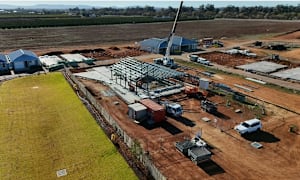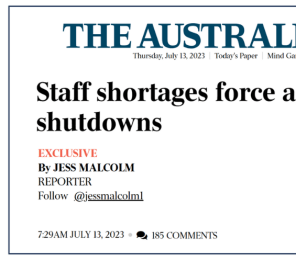Judy Mayfield, President of the Association of Residents of QLD Retirement Villages (ARQRV), contacted us late yesterday afternoon. With over 100 fires burning in SE QLD, she is receiving calls from villages that are not bushfire ready in the most basic way.
“Residents say, the fear of a bushfire is real. Yet they have looked everywhere, and cannot find anything about an evacuation plan, where to stand in case of an outbreak.”
"A resident just called me. There is only one gate at their village. If fire comes through there, how do they get out?”
"Then what happens at weekends when there is no Village Manager? Villages now have people with high care needs. How are they going to get out if the fire sweeps through."
Good planning and testing systems is essential for safety. The photo above and below are from Ingenia’s Lake Conjola bush fire in 2019. It is worth reading their account of how they responded – click HERE.

Retirement villages, land lease and park owners must have an emergency plan consisting of a written set of instructions that outlines what staff, residents and visitors in the village should do in an emergency. It should be easy to understand and tailored to the retirement village.
Our colleague James Wiltshire, Executive Director of the DCM Institute, wrote the quick note at the bottom on responsibilities of the operator.
As Lake Conjola and Judy Mayfield point out, there are villages located on single lane roads, which sets up for a potential disaster with emergency services coming one way while residents are attempting to go the other.
In Sydney one such road has three retirement villages, a big aged care home and a hospital, all within two kilometres, and surrounded by national park.
As the Ingenia story also pointed out, communication is the first area to fail. They needed satellite phone and over the next week sent out over 10,000 emails to concerned families.
They had the systems and training in place, plus software to support them.
All a timely warning to review procedures.
Fire Safety and Emergency Planning
While the requirements might be worded differently from state to state, operators have an undeniable obligation to keep their residents safe. This includes having an Emergency Plan, systems, and process in place to address events such as bush fire, floods, and other natural disasters.
Having the plan in place is critical, yet what is often overlooked is the way it is communicated to staff and residents – this includes training.
Best practice is for an Evacuation Drill to occur twice a year. While this might seem like a time-consuming commitment, especially on larger sites, they are critical to ensuring that residents and staff are prepared in the case of an emergency.
The DCM Institute not only encourages managers to hold Fire Drills, but to also keep a record of resident attendance. This way it allows the Manager to identify the residents who haven’t turned up, and approach them directly to ensure they are prepared in the event of an emergency.
Another tip from DCM Institute would be to encourage resident participation in these Drills by running a village morning tea, BBQ or afternoon tea.











